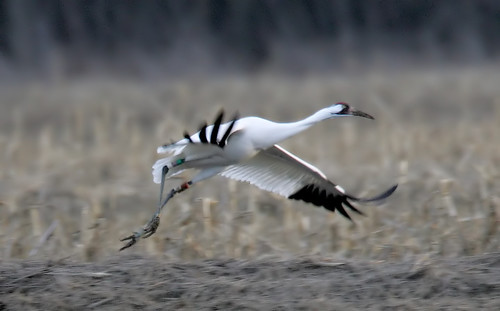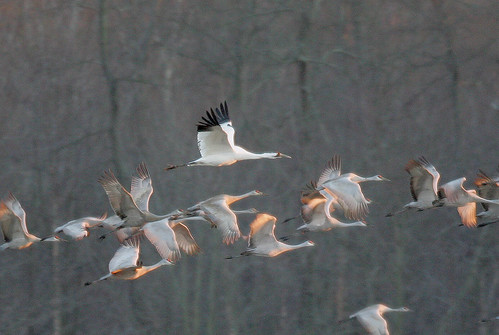
A wetland restoration project completed by USDA’s Natural Resources Conservation Service in Kentucky has attracted the fancy of a pair of endangered whooping cranes.
In early November, a pair of whooping cranes were discovered on a property in western Kentucky that was recently restoredwith NRCS’ help. The restoration to bottomland hardwood wetlands included tree planting and the creation of shallow water areas for migratory wildlife on nearly 900 acres of former cropland that was put into a conservation easement.
The cranes have been residing on the conservation easement since December 2012, roosting and feeding in the shallow water areas. This is a significant sighting because by the 20th century, the majestic bird was nearly wiped out.
Before human interference, there were, it is believed, 15,000–20,000 whooping cranes in the U.S. But in the 1800s, the whooping crane population was drastically reduced by habitat loss and hunting, and by 1860 the birds were thought to number only about 1,400. In 1941, there were only 15 whoopers left in the entire country.

The birds were declared endangered in 1967, under a predecessor to 1973’s Endangered Species Act. Through restoration efforts of the U.S. Fish and Wildlife Service and the Whooping Crane Eastern Partnership, today’s population is at almost 600 birds, with about 115 in the eastern migratory population.
Whooping cranes are almost entirely white. The body and wing feathers are a bright white, except for the outer tips of the wings, which are black. But the most noticeable characteristic of the whooping crane is the large red crown on the head that extends from the cheek, along the bill, and over the top of the head.
With a height of approximately 5 feet on stilted legs, whooping cranes are the tallest birds in North America, and have up to a 7.5-foot wingspan.
Although these birds are tall, they only weigh about 15 pounds. They primarily eat crustaceans, small fish, insects, amphibians and reptiles. They will also eat grains, marsh plants and acorns. The primary habitats of whooping cranes are wetlands, marshes, mudflats, wet prairies and fields.
A team of NRCS, FWS and Kentucky Department of Fish and Wildlife Resources biologists confirmed the identification of the birds after interviewing the landowner and visiting the conservation easement. The landowner of the conservation easement is happy with the restoration efforts, and the fact that “big, white, pretty birds” have decided to stop in and visit on their migration route.
Whooping cranes are still critically endangered, but with continued wetland restoration efforts, there is hope for their future.
Follow NRCS on Twitter.
Check out other conservation-related stories on the USDA blog.
